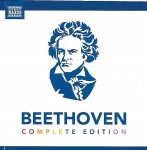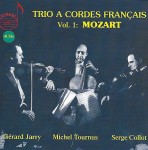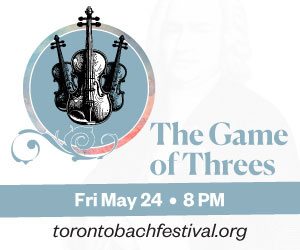Old Wine in New Bottles | Fine Recordings Re-Released - February 2020
Ludwig van Beethoven advanced music from the salon to the concert hall, from castle to cottage and made it the most democratic thing in the aesthetic world.” This year we celebrate the 250th anniversary of his birth in Bonn on December 16, 1770. Many recording companies have assembled extensive collections of performances including previously unrecorded items to create complete editions. Inevitably, the contents of some collections are more “complete” than others. The all-encompassing Beethoven site, The Unheard Beethoven, published their overview. They found that the Naxos edition has an astonishing 89 items not found on any other label, many times the highest number of unique-to-them compositions of any of the other complete editions.
 The Beethoven Complete Edition (Naxos 8.500250 naxos.com) contains 90 CDs derived from their own archives, new recordings and more. Each disc is in a fine cardboard sleeve with colour-coded border to match the category; red is orchestral, orange for concertos, yellow for keyboard, green for chamber (the largest collection), blue for stage, purple for choral and pink for songs and lieder. The collection comes, together with booklet, in a box that occupies the shelf space of 21 regular CDs.
The Beethoven Complete Edition (Naxos 8.500250 naxos.com) contains 90 CDs derived from their own archives, new recordings and more. Each disc is in a fine cardboard sleeve with colour-coded border to match the category; red is orchestral, orange for concertos, yellow for keyboard, green for chamber (the largest collection), blue for stage, purple for choral and pink for songs and lieder. The collection comes, together with booklet, in a box that occupies the shelf space of 21 regular CDs.
In the Orchestral section, the symphonies are played by the Nicolaus Esterházy Sinfonia, a chamber orchestra formed in 1992 in Budapest with personnel from the Hungarian Symphony Orchestra. Their purpose was to make recordings using an ensemble comparable in size to the groups known to Beethoven. Their maestro, Béla Drahos is a Hungarian conductor and flutist. The group plays modern instruments but the balances and recording quality result in natural, effortless transparency, esteemed upon their first release. Without any spotlighting, all the instruments’ voices are heard, appearing in clear perspective across the sound stage. The recordings date from 1995, and 1996 for the Ninth. In addition to the symphonies, there are the overtures, Coriolan, Leonora 1 & 3, et.al. Also, in this section are Dances… Dances, German Dances, Viennese Dances, Contradances and Minuets, plus Wellington’s Victory, etc. conducted by Oliver Dohnányi, Leif Segerstam, Stanislaw Skrowaczewski, Stephen Gunzenhauser and Drahós. The Dances are all charming and not for one moment tedious.
The Concertos, violin, piano and triple, and some shorter fragments are on six discs. The five piano concertos are played by Stefan Vladar in astonishing performances conducted by Barry Wordsworth plus the E-flat Concerto Wo04 conducted by Dragos. Takako Nishizaki, who may be the most recorded violinist of the digital era, plays the Concerto and the two Romances. On that same disc Jakub Junek plays a fragment of the Violin Concerto in C Major Wo05. Soloists in the Triple Concerto from Budapest, conducted by Drahos, are Dong-Suk Kang (violin), Maria Kliegel (cello) and Jenö Jandó (piano).
The 20-CD Piano category contains every note of all you’ve ever and never heard written by Beethoven for one and two pianos. Except for the 32nd, performed by Boris Giltburg, the 32 Sonatas are played by Jandó, a Hungarian pianist and professor of the Franz Liszt Academy in Budapest. All the other repertoire pieces are here, four CDs of Dances and Bagatelles, four discs of Variations plus a feast of music new to our ears, in addition to his transcriptions for piano of his various major works. Artists include Jandó, Carl Petersson, Sergio Gallo, Konstantin Scherbakov and many others.
Listening to Beethoven speak through his chamber music is, for me, a most gratifying and valuable part of this set. There are 30 CDs containing, of course, the 16 String Quartets together with another 95 other chamber works for diverse instruments, from duets to septets. Many of us know the Septet Op.20 in E-flat Major for clarinet, bassoon, horn, violin, viola, cello and double bass but few, if any, would recognize or be aware of the Wind Quintet Wo0208 in the same key for oboe, bassoon and three horns. Fortunately, the String Quartets are played by the distinguished Kodály Quartet, three of whom also play the string trios. The quartet was founded in 1966 by graduate students of the Franz Liszt Academy in Budapest; they play with the sound and innate musicality that distinguishes the finest Hungarian musicians, so many of whom are featured in this collection. Some exceptions though. The Fine Arts Quartet are prominent. The Violin Sonatas are played by Nishizaki accompanied by the ubiquitous Jandó. Also, the three Piano Quartets Wo036 are played by the New Zealand Piano Quartet. The Xyrion Trio from Germany plays the seven Piano Trios and their cellist Maria Kliegel and pianist Nina Tichman play the Cello Sonatas and three sets of popular variations. There are a host of other musicians playing a miscellany of great chamber works to discover.
There are seven discs in the Stage section featuring the 1805 version of the opera Leonore and the eventual Fidelio of 1814. The Leonore is from Leipzig conducted by Herbert Blomstedt with Edda Moser in the title role. Fidelio is conducted by Michael Halász with Inga Nielsen as Leonore. The Creatures of Prometheus Overture and Incidental Music, also scores for King Stephen, Egmont and the premiere recording of the complete The Ruins of Athens were recorded in Turku, Finland directed by Leif Segerstam. They are also responsible for Leonore Prohaska and other surprises.
The five Choral discs contain a somewhat esoteric entry, The Glorious Moment, Op.136 and also the familiar Choral Fantasy. The Missa Solemnis enjoys an outstanding performance from Nashville conducted by Kenneth Schermerhorn. The Mass in C Major, Christ on the Mount of Olives, two versions of Opferlied and the rest are directed by Segerstam in Finland.
Few would have imagined that Vocal would require 13 CDs. Songs of the British Isles occupy more than five CDs and Miscellaneous Folk Songs another one. There are four CDs of Lieder and another for voice and orchestra. Wrapping up this complete edition is the 90th CD of Canons and Musical Jokes.
Considering the quality of the performances throughout, the extent of the unique repertoire and the reality of the recorded sound, the Naxos box of Beethoven has it all.
 DOREMI has embarked on a survey of the many recordings of the Trio à cordes Français, one of the prominent chamber groups active internationally in the second half of the 20th century. The trio was formed in 1959 by violinist Gérard Jarry, violist Serge Collot and cellist Michel Tournus, each of whom was a highly respected musician. Their repertoire ranged from classical to contemporary. In addition to their recordings as a trio, they were also heard performing and recording with luminaries such as Jean-Pierre Rampal, Maurice Bourgue, Michel Debost, Pierre Pierlot and others. Volume One (DHR-8091-4, 4cds) is dedicated to the music of Mozart and comprises their complete Mozart recordings. It includes a wonderful rendition of the Divertimento for String Trio, K563, one of Mozart’s greatest masterpieces as well as the two duets for violin and viola and the beautiful quartets with flute, oboe and piano. The set includes a curiosity… an unfinished movement for string trio, K562e. The captivating performances throughout these four stereo CDs were recorded between 1966 and 1977.
DOREMI has embarked on a survey of the many recordings of the Trio à cordes Français, one of the prominent chamber groups active internationally in the second half of the 20th century. The trio was formed in 1959 by violinist Gérard Jarry, violist Serge Collot and cellist Michel Tournus, each of whom was a highly respected musician. Their repertoire ranged from classical to contemporary. In addition to their recordings as a trio, they were also heard performing and recording with luminaries such as Jean-Pierre Rampal, Maurice Bourgue, Michel Debost, Pierre Pierlot and others. Volume One (DHR-8091-4, 4cds) is dedicated to the music of Mozart and comprises their complete Mozart recordings. It includes a wonderful rendition of the Divertimento for String Trio, K563, one of Mozart’s greatest masterpieces as well as the two duets for violin and viola and the beautiful quartets with flute, oboe and piano. The set includes a curiosity… an unfinished movement for string trio, K562e. The captivating performances throughout these four stereo CDs were recorded between 1966 and 1977.
These musicians were active as soloists and this set includes a very fine, crisp performance of the Sinfonia Concertante for violin and viola, K364, accompanied by the Toulouse Chamber Orchestra conducted by Louis Auriacombe.
During Mozart’s lifetime, J.S. Bach was almost forgotten, only to be resurrected by Felix Mendelssohn decades later. It is therefore very interesting that Mozart took Bach works and arranged them for string trio and even composed his own preludes to the Bach fugues for contemporary performance. All these Bach/Mozart arrangements for string trio are included in this important set.


